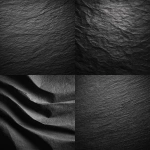Explore the Best AI Image Gallery

Quantum Creativity: Where Computation Meets Artistic Expression
The realm of art has always been a playground for innovation, constantly pushing boundaries and exploring new frontiers. Now, with the advent of quantum computing, we stand on the precipice of a revolution that promises to reshape the creative landscape in profound ways.
Quantum computers, harnessing the principles of superposition and entanglement, possess an unparalleled ability to process information. This immense computational power has the potential to unlock unprecedented possibilities for artists, designers, and creators across various disciplines.
Potential Applications in the Creative Industry
- Generative Art: Quantum algorithms can generate intricate and complex artworks, exploring novel aesthetics and pushing the boundaries of visual expression. Imagine algorithms capable of crafting stunningly realistic 3D models, composing mesmerizing musical pieces, or designing interactive narratives that adapt to the viewers choices.
- Personalized Creative Experiences: Quantum computing can enable highly personalized creative experiences tailored to individual preferences and tastes. Think about AI-powered tools that assist in writing poems, composing music, or designing fashion items based on your unique style and input.
- Interactive Storytelling: Immersive storytelling can be elevated to new heights with quantum-enhanced interactions. Imagine narratives where choices made by the audience directly influence the plot, characters, and even the visual landscape, creating a truly dynamic and personalized experience.
- Design Optimization: From architecture to product design, quantum algorithms can optimize complex designs, exploring countless variations and identifying the most efficient and aesthetically pleasing solutions.
Ethical Considerations
While the potential benefits of quantum computing in the creative industry are immense, its crucial to address the ethical implications that arise:
- Copyright and Ownership: Who owns the copyright to artworks generated by quantum algorithms? How do we ensure fair attribution and prevent plagiarism in a world where AI can create art?
- Bias and Representation: Quantum algorithms are trained on vast datasets, which may contain inherent biases. Its essential to ensure that these biases are identified and mitigated to promote diversity and inclusivity in creative outputs.
- Access and Equity: The high cost of quantum computing could create a divide between those who can afford to leverage its power and those who cannot. Efforts must be made to ensure equitable access to this transformative technology.
Future Trends
The intersection of quantum computing and creativity is still in its early stages, but the future holds exciting possibilities:
- Hybrid Creativity: Well see a growing collaboration between human artists and quantum algorithms, with each enhancing the others capabilities.
- Quantum-Enhanced Education: Quantum computing tools will empower students to explore their creative potential in innovative ways, fostering a new generation of creative thinkers.
- New Artistic Disciplines: Quantum computing may give rise to entirely new artistic disciplines and forms of expression that we cant even imagine yet.
As quantum technology continues to advance, the creative industry stands poised for a transformative journey. By embracing the potential while addressing the ethical challenges, we can unlock a future where art and computation converge to create something truly extraordinary.
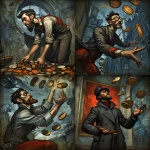

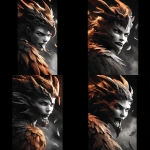
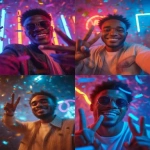
](https://images.ai-img.art/thumbnails/150/1d7b3a908141474d50d90721c394db29c0cb5404d685ae70ea60430c18e905b7.webp)
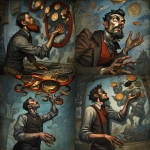


](https://images.ai-img.art/thumbnails/150/1accb5453f2335686b162f0a879c7ce73a18516a33868f214a16bdaf95beeb5a.webp)
](https://images.ai-img.art/thumbnails/150/3c5dc62bba83cc9919c20ebfec8430d31e821cef586a2753dd85ef26d77d480a.webp)





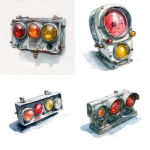


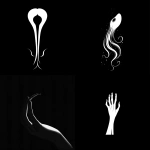
](https://images.ai-img.art/thumbnails/150/8c320ce9aefbbb5b9ec5fd4e1d0fba7388f0fff5b6c2e2f14077cad3008f291d.webp)

](https://images.ai-img.art/thumbnails/150/3e8c063b4357fc743a3c6e49a3145ee31b2dcecc018c38d2db8f97bf3e3fda3f.webp)
